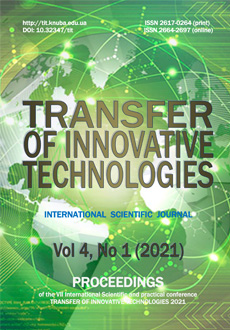Application of laser scanning for monitoring condition of buildings and structures during reconstruction
DOI:
https://doi.org/10.32347/tit2141.0106Keywords:
three-dimensional laser scanning, point clouds, 3D modeling, surface creation, BIM, reconstruction, monitoring, condition of buildings and structuresAbstract
Ground-based laser scanning technology has been increasingly used in the last 15 years to solve problems not only in engineering geodesy, but also in the inspection of buildings and structures, in particular to identify damage and deformation during operation and reconstruction, as well as operational control of construction. and monitoring of their condition during operation, 3D-modeling of complex architectural objects. The growing popularity of laser scanning is due to a number of advantages provided by the new technology in comparison with other measurement methods. Among the advantages are the main ones: increasing the speed of work and reducing labor costs. The emergence of new more productive models of scanners, improving software capabilities allows us to hope for further expansion of the scope of ground-based laser scanning. Three-dimensional laser scanning emits millions of laser beams and, by calculating their return time, can accurately and accurately calculate their three-dimensional locations to make multiple high-speed scans combined into one system. This works by digitally recording the dimensions and spatial communication of objects by reflecting laser radiation.
References
ŁLukasz J. Bednarz, Jerzy Jasieńkoa, Marcin Rutkowskib, Tomasz P. Nowaka. (2014) Strengthening and long-term monitor-ing of the structure of an historical church presbytery. Engineering Structures, Vol.81. DOI:10.1016/j.engstruct.2014.09.028
hhttps://leica-geosystems.com/ru/products/laser-scanners/laser-scanning-industry-applications
https://hivevp.com/3d-laser-scanning-for-chemical-plant-applications/
https://www.e-arc.com/blog/4-use-cases-for-3d-laser-scanning-in-construction/
ДСТУ Б А.2.4-4:2009. Система проектної документації для будівництва. Основні вимоги до проектної та робочої докумен-тації.
Downloads
Published
How to Cite
Issue
Section
License

This work is licensed under a Creative Commons Attribution-NonCommercial-NoDerivatives 4.0 International License.
Our journal abides by the CREATIVE COMMONS copyright rights and permissions for open access journals.
Authors, who are published in this journal, agree to the following conditions:
1. The authors reserve the right to authorship of the work and pass the first publication right of this work to the journal under the terms of a Creative Commons Attribution License, which allows others to freely distribute the published research with the obligatory reference to the authors of the original work and the first publication of the work in this journal.
2. The authors have the right to conclude separate supplement agreements that relate to non-exclusive work distribution in the form in which it has been published by the journal (for example, to upload the work to the online storage of the journal or publish it as part of a monograph), provided that the reference to the first publication of the work in this journal is included.




